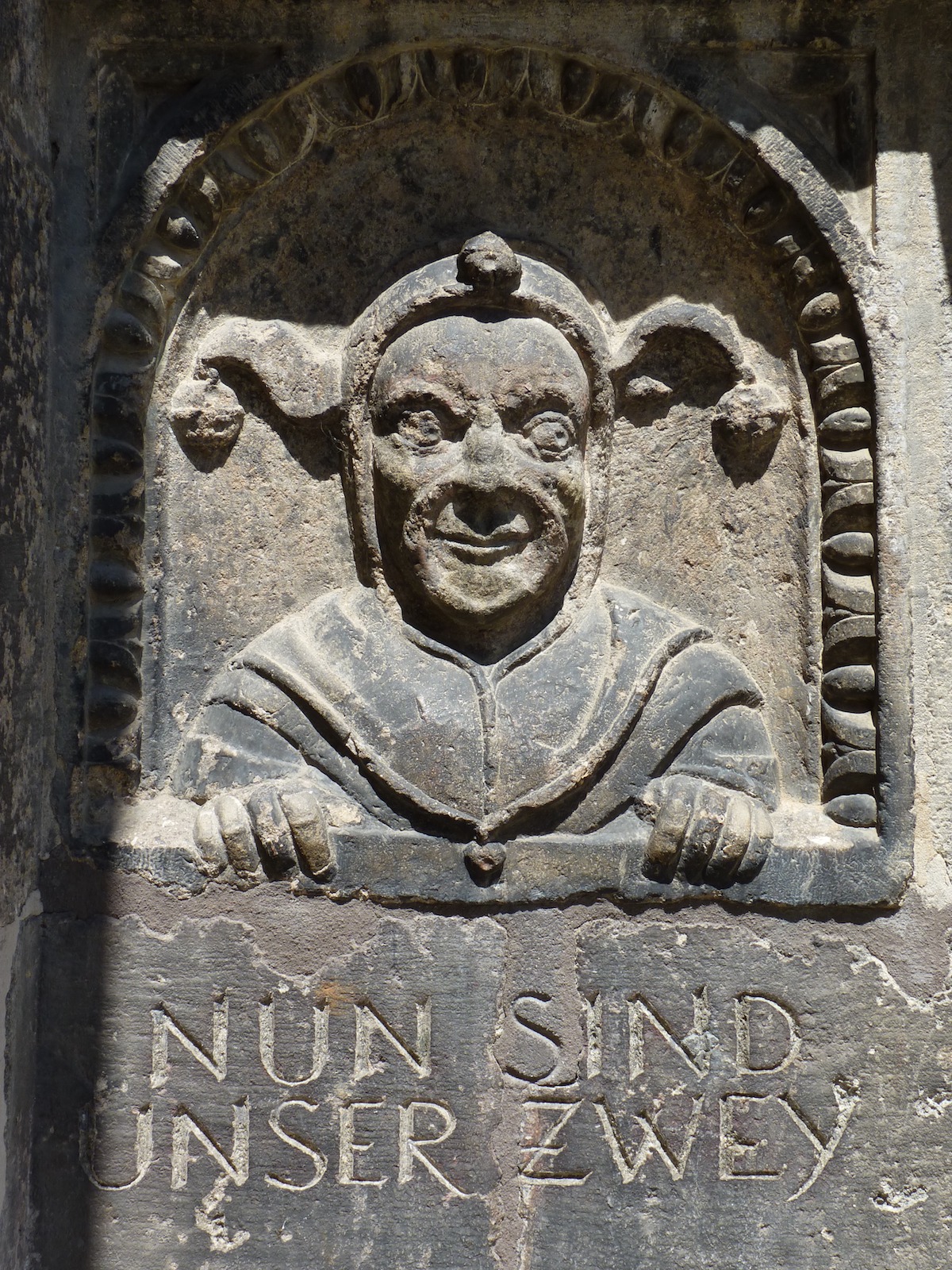In my new book Orion’s Door, I weave together various strands of esoteric knowledge and symbolism significant to the connection between Orion and Saturn worship. The blog below is a sample of such material taken from the book.
But see, Orion sheds unwholesome dews;
Arise the pines a noxious shade diffuse;
Sharp Boreas blows, and nature feels decay,
Time conquers all, and we must time obey.
Alexander Pope
The Ojibwa (Chippewa) Native Americans call the Orion constellation, ‘Kabibona’kan’, which means the ‘Winter Maker’, as its presence in the night sky heralds the coming of winter. Orion is the marker for the coming of the ‘time of death’ in nature and the eventual arrival of the new sun (new year). He is the ‘Year Maker’, and from late summer through to the Beltane (May Day), Orion dominates the sky above the horizon, along with Aldebaran, the Pleiades, Polaris and Ursa Major. Earth’s Pagan festivals marked by the passage of the Sun and the Moon combined, give us the equinoxes and solstices; but the constellations, especially Orion, seem to provide a ‘backdrop’ for some of the most important rituals (festivals) on Earth.
Orion leaves our night skies during the late spring months of May and into June. While out of sight, Orion is said to be in the Underworld. Orion’s passage through autumn into the heart of winter, and the symbols, festivals and other planetary bodies connected to the star man, not least through a collection of archetypes related to Gnostic hermetic mysticism, astrology, and symbols associated with the trickster, or the ‘fool’.
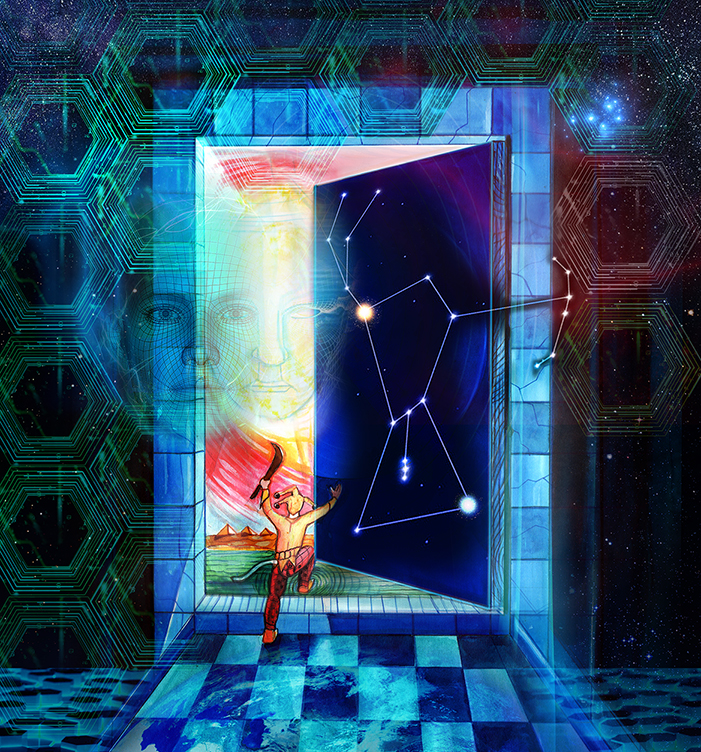
Tripartite (triangle) symbolism, the number three (see the points on the hat of the medeaval court jester) and the tripartite goddess connects to the notion of doors (gateways) into darker days (or the Underworld) and the nocturnal aspects of Orion. Hecate, was one of the principal deities worshipped in Athenian households as a protective goddess who bestowed prosperity and daily blessings on the family. The ancient Greeks honoured Hecate (or Hekate) during the ‘Deipnon’ – the evening meal, especially on a new moon, but generally, she was a ‘nocturnal’ doorkeeper goddess.
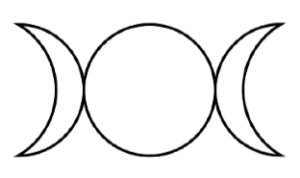

Hecate is sometimes associated with the cypress, a tree that is symbolic of death and the Underworld – sacred to a number of chthonic (under the earth) deities, not least the spider. The ‘Day of Hecate’, or ‘Soteira Nocturnal’, is the Winter Solstice (21st December) and ritual sacrifice was (and still is) a common practice at the solstices and equinoxes in many ‘underworld cults’, not least the Orion-Saturn Cult I highlight in the book. In Hekate Soteira: A Study of Hekate’s Roles in the Chaldean Oracles and Related Literature (1990), Sarah Johnston provides the chief attributes of this goddess. She writes:
Hekate was present whenever souls crossed the boundaries between life and death… In her role as the goddess of the crossroads Hekate’s control over passage of liminal points also included opening and shutting the gates of Hades.1
Beckoning Darkness & the Winter Door
Around 160 AD, the alchemists (or theurgist), authors of the Chaldean Oracles, linked Hecate to the Cosmic Soul in Plato’s Timaeus, whose form was also a celestial ‘X’ (there is a whole chapter dedicated to the ‘X’ symbol in Orion’s Door). The point here is that Hecate, as the ‘triple’ goddess, whether we see her as a personification of the moon, or the torch carrier at the gates of Hades, is the goddess of the ‘darkness’. Hesiod, the Greek poet (750 and 650 BC), one of the authors credited with Homer for establishing Greek religious customs, described Hecate as a ‘primal cosmic force, one that can be called upon when worlds cross’. Like the ‘Three Norns’, or the ‘Three Weird’ (Wyrd) Sisters found in Runic magic, all can be ‘drawn down’ at important dates on the pagan wheel at the equinoxes and solstices. Hecate’s wheel symbolism also relates to the ‘core star’, or ‘soul’, said to be at the centre, interacting with what the Gnostics called the ‘fire serpent’ and primordial energy that creates us. What I see with Hecate’s wheel is a ‘celestial compass’, tuned to the stars (especially Orion) and the moon in the darker days of the year.
The winter triangle formed between the stars of Orion (Betelgeuse) and Sirius (Procyon) form another doorway, which is part of two prominent winter asterisms: the ‘Winter Triangle’ and the ‘Winter Hexagon’. The other two stars forming the Winter Triangle, also known as the ‘Great Southern Triangle’, are Sirius and Procyon, which are the brightest stars in the constellations Canis Major and Canis Minor, respectively (see figure). The configuration is another version of the tripartite symbols associated with darker days.
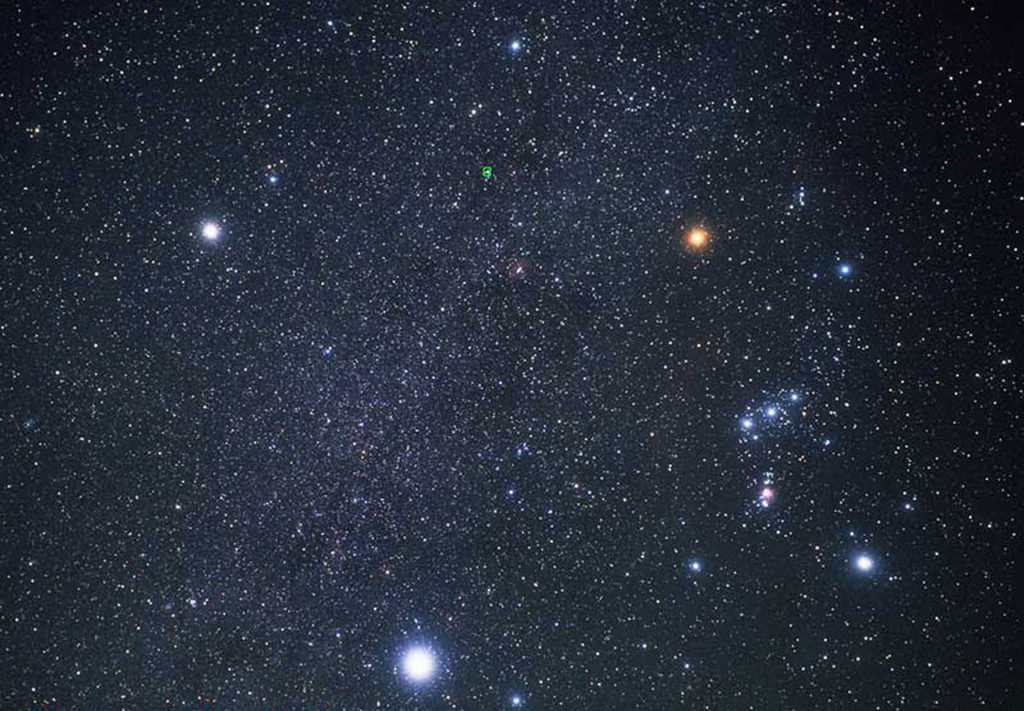
Writing in his book, Stellar Magic (2009), Payam Nabarz mentions the moon goddess (Hecate) in myths associated with Sirius and the Winter Triangle:
The star Sirius or the Dog Star is part of the constellation Canis Major (Great Dog), in Greek myths he was seen as Orion’s hunting dog. After the death of Orion, Diana placed Orion’s dog in the sky at his heel to help with the stellar hunt. The star Sirius is part of the winter triangle; the two other points of the triangle are the star Betelgeuse in Orion and the star Procyon in Canis Minor. Sirius, the brightest star in the night sky, can be located in the night sky by following an imaginary line from the three stars of Orion’s belt to the left and down. The star Sirius is one of the oldest constellations described by man; the Fire Star is one of the stars in the Babylonian A Prayer to Gods of the Night (circa 1700 BC).2
Canis Major and Canis Minor are the ‘hunting dogs of Orion’ and with Betelgeuse (the reddish star), they are all symbolic of the royal hunt (see fox hunting) in the UK (especially in autumn and early winter when ‘darker days’ draw to us).
Lenaea of the Wild Hunt
Like Orion and Artemis, ‘Lenaia’ (Lenaea) heralded the hunting season, which is predominantly through the autumn leading up to Samhain or Halloween (Hallowe’en). Samhain is a major point on Hecate’s wheel, along with Kali and the Darker aspects of the Goddess. The end of October focuses our attention at the time of the ancestors, when the curtain between the dead and the living opens. As a goddess of the door, Hecate was also known as ‘Arianrhod’, ‘Catherine’ and ‘Persephone’ in other cultures and myths, as she ushers in the winter festival of ‘Lenaea’ and the time of the wild hunts. The wild hunt, popular in ancient Greece, was also akin to celebrating ‘dark forces’ that would run amok from their point of entry into our world at Samhain (Hallowe’en) through to mid-December or Saturnalia. The forces hunting were said to be ‘otherworldly’, captured brilliantly in Peter Nicolai Arbo’s painting, Asgårdsreien (The Wild Hunt of Odin) 1872 and by the German painter, Friedrich Wilhelm Heine, in his drawing, ‘Wodan’s Wild Hunt’ (1882), see figure.
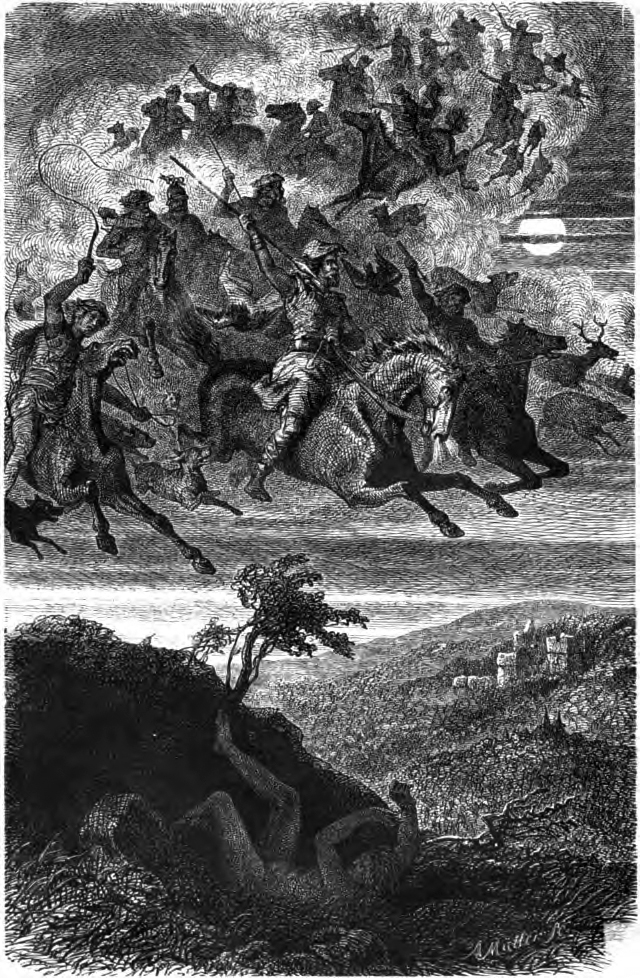
The mantra of Halloween and Christmas in their modern guise, along with imagery connected to other calendar dates, serve as a ‘channel’ for otherworldy forces that feed off our collective energy, primarily through the darker nights as we head towards the birth of the new son (sun), or year. It’s as if a door is opened at the autumn equinox and as daytime gradually gets shorter, with an increase in darkness, we become more susceptible to sublime forces appearing in the visible world. Archetypes are at work in the collective mind, too, and at the time when the veil is thin (from Halloween onwards), we find ourselves starting to go inward.
The Renewal Twins
John the Baptist was said to be born six months before Jesus Christ, and both figures astrologically mark Orion’s arrival in the sky, along with the dog days of the Sothic Sirius calendar. They are the ‘Oak’ and ‘Holly Kings’ or ‘twin sun kings’ whose coronations coincide with the summer and winter solstices – 21st June and 21st December. In Pagan worship, they are also the ‘Green Man’ figure entwined with the goddess forming part of these coronations throughout the solar year, which is why Green Man symbols can be found all over Christian churches and cathedrals (see figure). The hairy woodwose figures, found in iconography and art from ancient Sumeria to 14th Century Christian literature, are also connected to the Oak and Holly Kings.
The bear and woodwose, often depicted in art, are symbols for the ‘Children of Hermes’, the original magicians and angelic humans. A house in Thiers (Puy-de-Dôme), France, shows an effigy of a bear-man (a woodwose) with the head of a Fool on his staff (see figure). The 15th century place is called the ‘House of the Man of the Woods’. The Fool, of course, is a link to Orion, or Kesil (below right); similar sculptures can be found on numerous Christian cathedrals, all of which seem based on the man of the woods – or the children of the bear. John the Baptist was often depicted as ‘hairy’ in canonic art due to ‘Hermes’ connection.
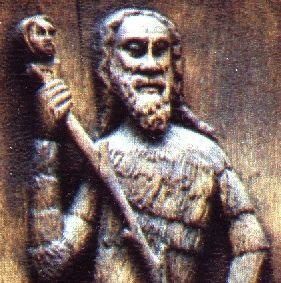
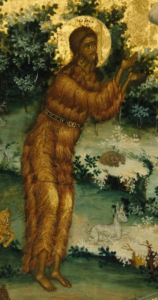
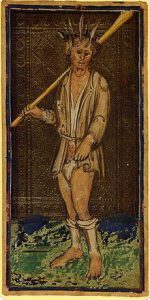
Whether pagan or Christian, the twin sun king (Jesus and John) reigns over the solstices in a perpetual cycle of life, death and rebirth. According to the biblical story, John loses his head, symbolic of the pumpkin (skull) at Halloween, of which some scholars speculate was in the month of ‘Tishre’ (October), sometime after Yom Kippur. Just as the leader of the ‘Sun and Fire’ clans, Pahana, of the Orion worshipping Hopi, also has his head removed on their ancient tablets. The Orion worshipping Hopi deity, Masau’u, was also said to carry a pumpkin-like mask (or head) and a sack of seeds (stars) and all of the symbolism relates to Orion’s appearance in the form of Masau’u between the summer solstice and winter solstice every year.
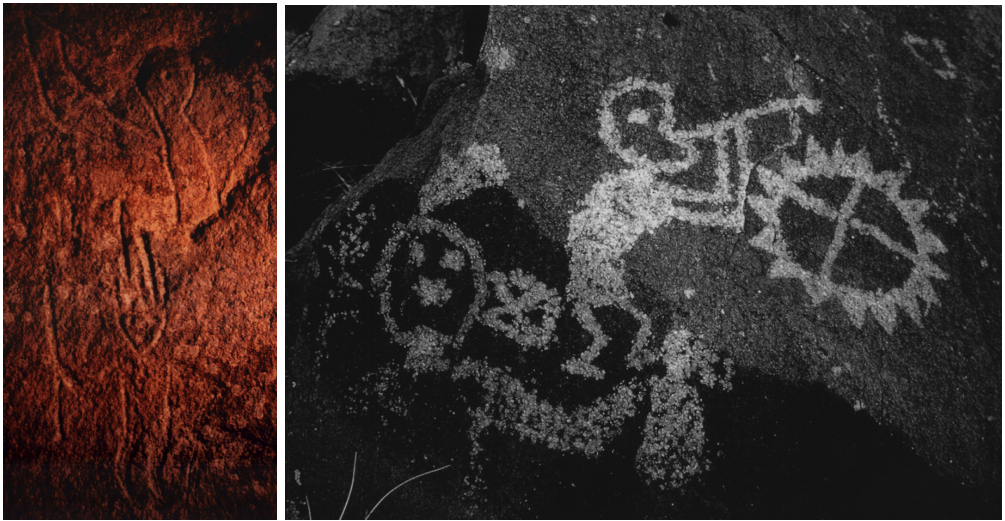
The twin symbols of the ‘skull and the crucifix’ also represent two prominent dates on the Christian calendar, especially in America – Halloween and Easter. And both festivities have a common denominator, which is ‘death’ and ‘renewal’ represented by the solar king guided by Orion’s passage across the skies.
Light and Darkness at Hallowe’en
The ‘dark side’ is exactly what we are looking at with Halloween and the days leading up to it. The symbolism relates to death, and sometimes the opposite, ‘the god of Life’ (from the light half to the dark half of the year). The imagery associated with the skull (the Halloween pumpkin-head), the scorpion and the ‘Day of the Dead’ was, and still is, a prominent symbol for the cults who focus on death.
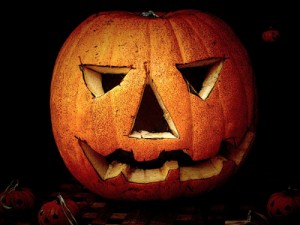
As Stephen Arroyo writes in his book, Astrology Karma & Transformation: The Inner Dimensions of the Birth Chart (1992):
The Scorpio period of the year (at least in the Northern Hemisphere) is the time when the life force withdraws from all outer forms in nature and is concentrated in the seed. It is striking that the cultural symbol for this time of the year in the United States is the Halloween pumpkin with its insides removed, leaving only an empty shell with a blankly staring face. In fact, the Jack-o’-lantern is a symbol of death, a symbolic skull with the glimmering remains of the departed life-force represented by the candle within.3
The scorpion (or spider) is an important symbol, too, not only because it represents the astrological period of Scorpio (October – November), but it sits opposite to Taurus (Orion) on the wheel and therefore creates the duality of light and dark. Orion’s death in Greek myth is from the sting of the scorpion. The skull (a symbol of death) is still used as an image at festivals from Halloween through to Christmas, or Saturnalia. From mid December we pass through the final doorway (symbolically) to the ‘new sun’ (the new light) and in some of the Scandinavian folklores, Krampus, (the horned door-keeper), accompanies Father Christmas (see figures). Krampus is alos the goat Pan and represents the nefarious force at work through this period on the calendar.
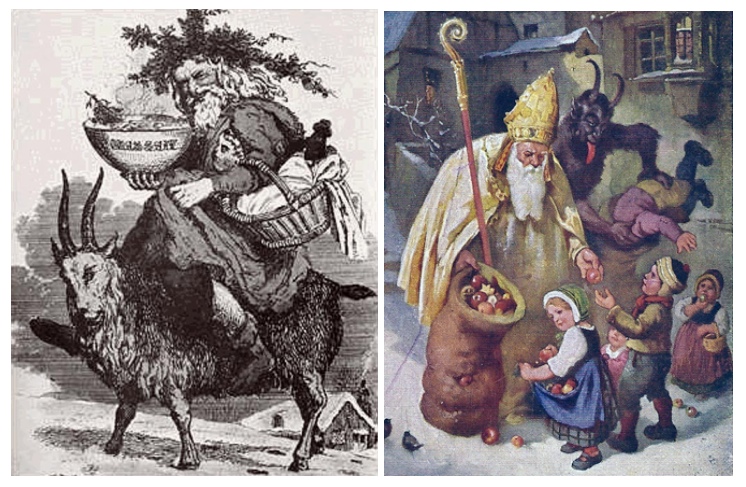
Saturnalia ‘Time’ – Two Sides of Christmas
On one level, Saturnalia was also a ’festival of light’ in Rome, leading through to the Winter Solstice (21st December). Saturnalia was ushered in and signified through an abundant presence of candles (fairy-lights) and pine trees in ancient Rome. The tree and the lights on them are meant to be symbols of our quest for ‘knowledge’ and ‘truth’ (light) at the darker end of the year. Another aspect of Saturnalia is about both ‘giving’ and ‘taking’ of energy. However, when you look around our modern 21st century version of the Roman ‘Saturnalia fest’, I think it’s safe to say that knowledge and truth has taken more of a back seat (see my Blog on Christmas). The whole period of ‘time’ called Christmas can be an unnecessary burden for too many and it also focuses our energy on ‘polarisation’ of those who ‘have’ and those who ‘have not’. Spending time with family and loved ones is wonderful for most, but sanctioning it as an official holiday becomes tedious, draining and for many that have ‘woken up’, or seen the light, it’s just another energy theft that has no bearing on the real plight of humanity. Before anyone accuses me of ‘Bah, humbug’ (a phrase incidentally that means to act in a ‘deceptive’ or ‘dishonest’ way), I will say that there is a meaningful connection to the ‘introspection’ aspect at this ‘time of year’. The winter period brings ‘clarity of focus’ for those who can look within. Being creative is important, too, as winter kicks in, but the modern day version of what was ancient Saturnalia is nothing more than a ‘massive energy grab’ (our human energy) just as it always was meant to be.
We Three Kings from Orion Are
In previous blogs, I have pointed out correlation theories relating to the three belt stars of Orion (Alnitak, Alnilam and Mintaka) and the pyramids of Giza – not to mention the Hopi’s Three Mesas of Arizona. However, many myths are allegories of the path of the sun through the zodiac signs, and the famous axiom, ‘As above and so below’, is so true. The word Orient, in the Christmas Carol We Three Kings from Orient Are, should be replaced by ‘Orion’ – ‘We Three Kings of Orion Are’. The three Magi, or ‘Drie Koningen’, who searched for the newly-born solar Christ are symbolic of the three stars in the hunter’s belt in the winter sky (see figure).
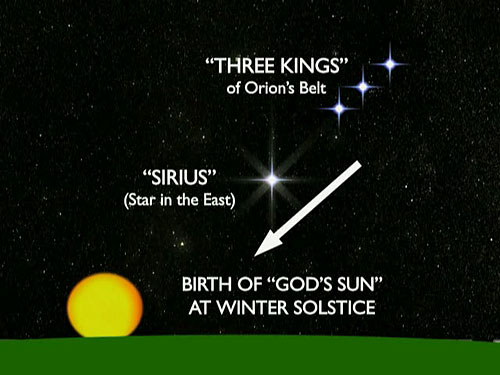
The Three Kings could also represent three divine aspects of ‘will’, ‘love’ and ‘intelligence’ (three lights) in some sources. The name, Orion, in Hebrew, means ‘the breaking forth of light’ and therefore symbolises the ‘place of light’. In ancient Akkadian, Orion was ‘Ur-ana’, the light of heaven and is the ‘place’ from where Saturn (Saturnalia) gets its interstellar instructions.
In some South American cultures, Orion’s Belt is known as ‘Las Tres Marias’ (The Three Marys) in honour of Mary of Nazareth, Mary Magdalene, and Mary of Bethany. Astrologically, the alignment of Orion’s belt (three Kings or Marys) as they follow Betelgeuse moving east over the horizon, towards the birth of the sun in the precessional cycle across the sky at night (on December 25th), adds another layer to the Christmas story. The shepherd’s dog (Sirius) and the ox (Taurus) in the stable all add another facet to the Christmas tale. It is a story that clearly seems to map the position of the stars and offer the idea of a ‘star being’ being born.
The Trickster Star Gods
In Greek myth, the Minotaur and Ariadne are aspects of the Underworld and associated with Dionysus, another Christ-Orion figure. It was Ariadne, according to Greek myth, that created the Labyrinth to hold the horned Minotaur. In fact, the giant spider-scorpion (see figure) and the Minotaur are symbolic of nefarious forces opposing Orion in Taurus. It is also interesting to note that in Lakota myth, there is a giant spider called ‘Iktomi’ who is a trickster spirit, and a culture hero for the Teton Sioux Lakota people. Alternate names for Iktomi include Ikto, Ictinike, Inktomi, Unktome, and Unktomi and according to numerous North American plains tribes, Iktomi represents a star deity. I would suggest Ikto is connected to nefarious forces originating from Orion’s star, Betelgeuse, just as are the Koshari clowns in Lakota belief (see my blog on Orion).

On another level, Lakota mythology itself is a ‘living belief system’ and the spider, Iktomi, represented a ‘living (alien) consciousness’ that would spread its web all over the land. Today, this has been interpreted by some contemporary Native Americans to be the telecommunications network, the Internet, or the World Wide Web. Some Lakota see the spirit of Iktomi as the patron of ‘new technology’, from the invention of language, to today’s modern cyber world of the computer, robots and I would add ‘artificial intelligence’. I would suggest that the ‘spider’ is a prominent image that could relate to an extraterrestrial intelligence that has hacked into our minds. The themes in so many science-fiction movies, not least The Matrix movies seem to suggest such a phenomenon.
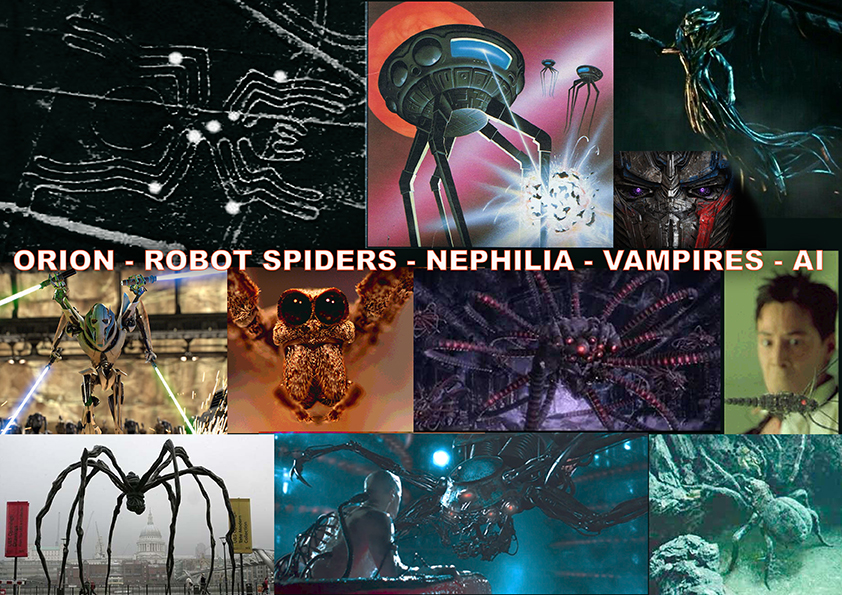
The Fool and the Lord of Misrule
Another aspect to Saturnalia, is the ‘King of Saturn’ who ruled as the ’master of ceremonies’ for the proceedings through the Saturnalia period. He was appointed by lot and has been compared to the medieval ‘Lord of Misrule’ at the ‘Feast of Fools’, the last day of Saturnalia at Epiphany (6th January). In England, the Lord of Misrule (known in Scotland as the ‘Abbot of Unreason’ and in France as the ‘Prince des Sots’) was an officer appointed to preside over the Feast of Fools (see figure).
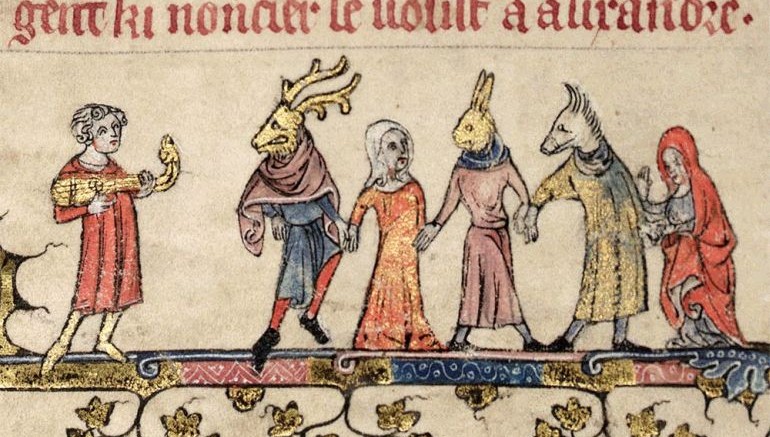
The Lord of Misrule was generally a peasant appointed to be in charge of Christmas revelries, which often included drunkenness and wild partying, in the pagan tradition of Saturnalia. The donkey, or ass, was another symbol of misrule and ‘mockery of law and order’, ‘title and kingship’. In Ancient Egypt, Seth, Osiris’s brother and slayer, was sometimes shown to have the head of an ass. That’s why Apuleius in ‘The Golden Ass’ describes a great metamorphosis, the transformation of Lucius to a donkey and his way back – spiritual evolution towards the human being. Jesus (like King Solomon before him) was also said to ride into Jerusalem on a donkey, which of could relate to Jesus as the Saturn figure, a Lord of Misrule, on one level. The ‘She-Mule’ could be also seen as ‘Donkey Pope’ found in anti-Catholic Satire during the Reformation in 16th-century Germany. Some of the oldest tarot decks also show the Pope as a Donkey.4 The ass and the Lord of Misrule go together at both Saturnalia (Christmas) and Ostara (Easter). There is also a connection to the character, Puck, from Shakespeare’s, ‘otherworldly’ A Midsummer Night’s Dream – from where the line, “Weaving Spiders Come Not Here” derives. A phrase that can be found at the infamous Bohemian Grove elite summer camp, a club motto which implies that outside concerns and business deals are to be left outside.
The idea of a Lord of Misrule during Saturnalia also reminds us of the Donkey Pope/Priest that the Church Fathers mention, including Tertullian. This ass-faced ‘scapegoat’ connects to Baphomet of the Oriental Knights Templars and the redeemed Gnostic archon, ‘Sabaoth’, also called the ‘Lord of Forces’ in Gnostic scripture, Hypostasis of the Archons and On The Origin of the World. This Donkey-like god was connected to Yahweh (Jehovah) by the Gnostics, as Epiphanius in the Panarion (26:12:1-4).
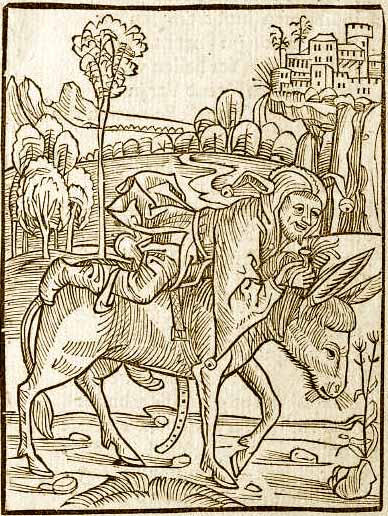
The Lord of Misrule gets more gruesome in Rome. In ‘Durostorum on the Danube’ (modern Silistra), Roman soldiers would choose a man from among them to be the Lord of Misrule for thirty days through December. The classic image of the Fool, or jester is also a Lord of Misrule figure (see figure). The three pointed hat seems to represent the triptite symbolism of Orion, or what I refer to as The Orion (interstellar) Cult, or the Orion-Saturn-Moon Cult in my book. At the end of those thirty days, his throat was cut on the altar of Saturn.
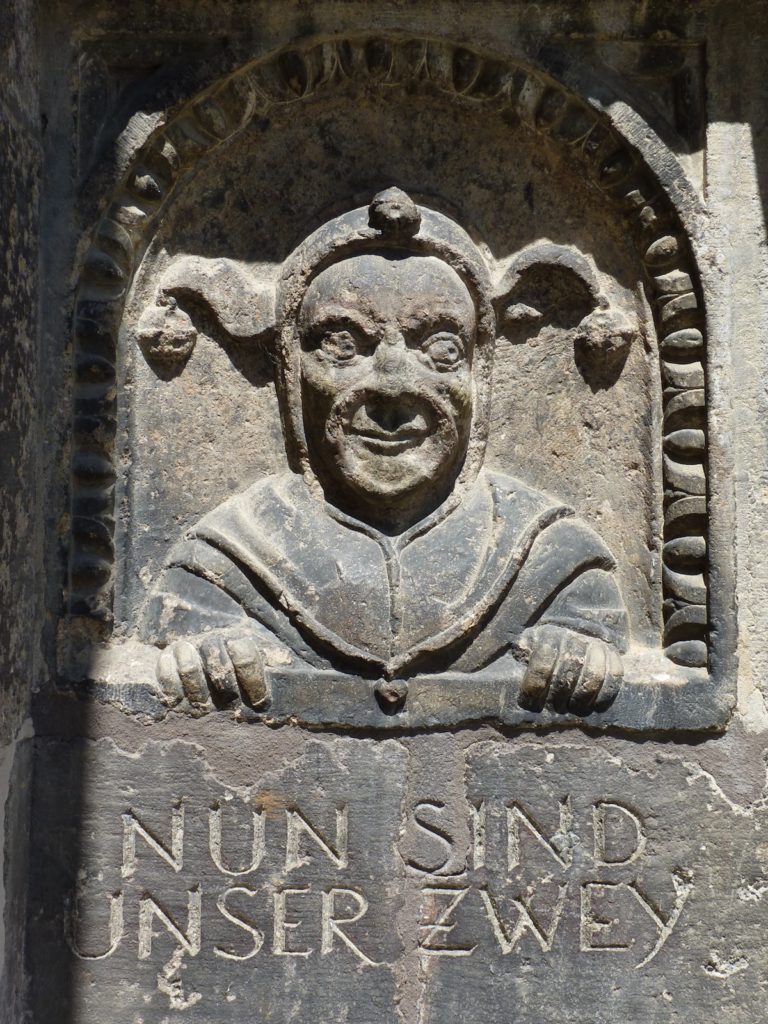
Similar origins of the British Lord of Misrule, as a ‘sacrificial king’ (a temporary king, who was later put to death for the benefit of all, have also been recorded. See the movie, The Wicker Man (1973) starring the late, Lord of Misrule himself – Sir Christopher lee. Christopher (Frank Carandini) Lee, who never got to play either ‘Santa’ or ‘Krampus’, as far am aware, often mentioned his ancient Roman ancestry (bloodline) in books and on TV interviews. His autobiography, Lord of Misrule (published by ‘Orion’ in 2003), hints at his knowledge of the occult and symbolism associated with Saturnalia, ancient Rome. I once stood next to Lee at a Eurostar waiting area over twenty years ago, at the time he had just finished filming the Lord of the Rings trilogy and he seemed both enigmatic and ‘strange’ to me. Whether ‘Sauroman’, ‘Lord Summer Isle’ or Count Dracula, his movies were very Saturnian, to say the least.
Roman Saturnalia was also best known for roles reversal and behavioural license (the Lord of Misrule again), allowing slaves to act like masters and vice versa. Roman slaves were treated to a banquet of the kind usually enjoyed by their masters. Role-playing was implicit in the Saturnalia’s status reversals, and there are hints of ‘mask-wearing’ or guising in ancient Rome. Historically, elite families would have loved all that role-play, hunting in masks and generally playing roles reversed? Maybe they did and still do? Slaves were set free just for the festivities… So ‘nothing’s changed then?’ See every Bank Holiday in the western world. Who is it that rules over the banking system astrologically? Saturn!
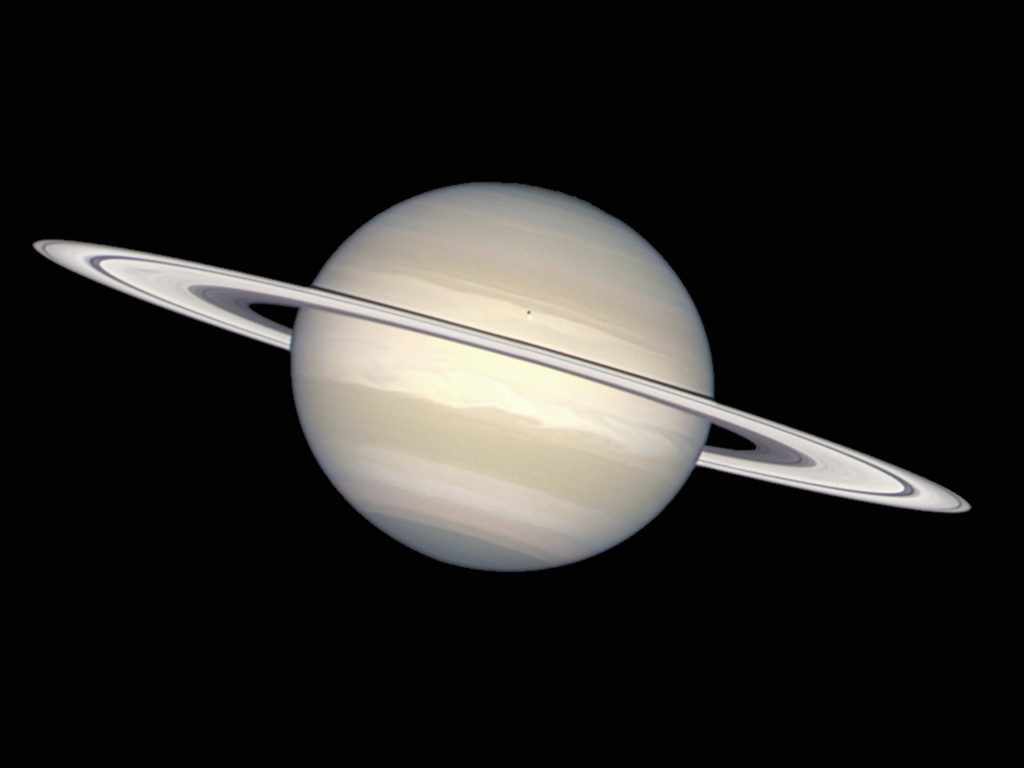
Who owns the banks? Those in power that seem to ‘adore’ Saturnalia. Henk Versnel writes in Saturnus and the Saturnalia (1994):
Gambling and dice-playing, normally prohibited or at least frowned upon, were permitted for all, ’even slaves’. Coins and nuts were the stakes. On the Calendar of Philocalus, the Saturnalia is represented by a man wearing a fur-trimmed coat next to a table with dice, and a caption reading: “Now you have license, slave, to game with your master.” Rampant overeating and drunkenness became the rule, and a sober person the exception.5
The festival time, or holiday season (from Thanksgiving to Christmas), is when you are allowed to feel free for a week or so, to drink (be merry) and pretend that you’re not a ‘slave to the system’. Under our current Corona restrictions, we seem to be in slave mode perpetually.
If people wish to make a change and want to really ‘vibrate’ to a ‘higher level’, and go beyond the religious symbolism and materialism connected to Halloween and Saturnalia, we may have to ‘come away from the ‘same old rituals’, programmes and polarised views that are tucked away within all of the ‘razzamatazz’. Symbols, icons, stories and legends are more powerful than we can imagine. We are still in ancient Rome (and Egypt) in so many ways; these rituals and festivals have been with us since then and linger still. I would prefer to focus on ‘introspection’ at this time of year (which is hard when you have small children, I know) but whatever you do, make sure you can get out of the ‘Saturn vibe’, even if it’s just for an hour or two, to contemplate the ‘bigger picture’ beyond the hold of Saturnalia in the darker half of the year.
We have to look beyond the overarching reach of Orion’s presence too, if we are to pass through the door into higher levels of consciousness.
